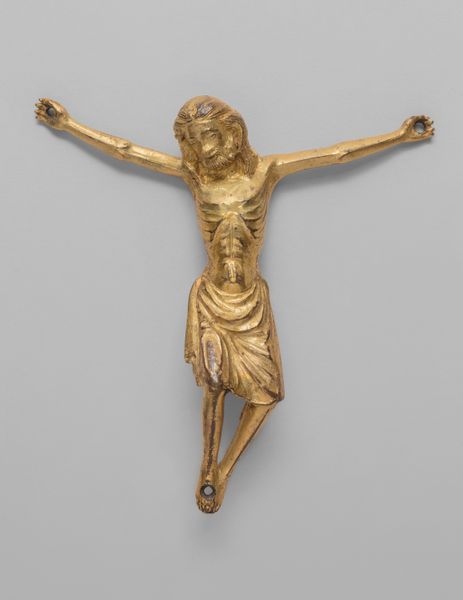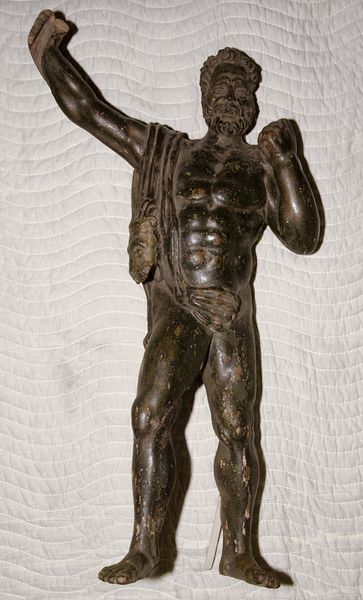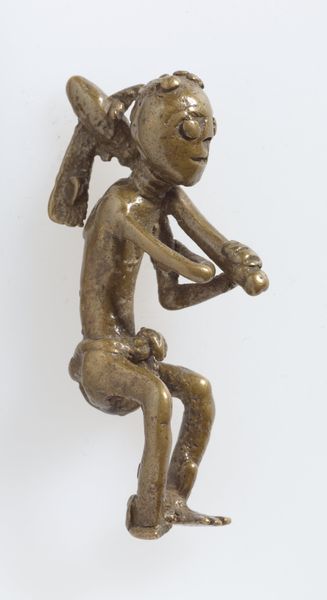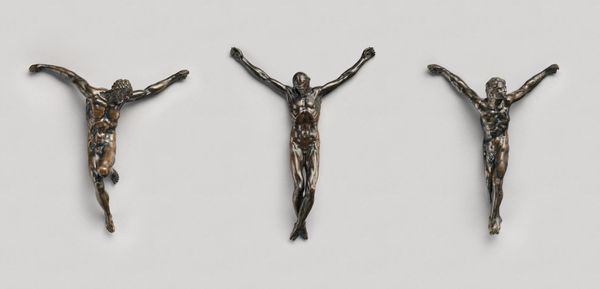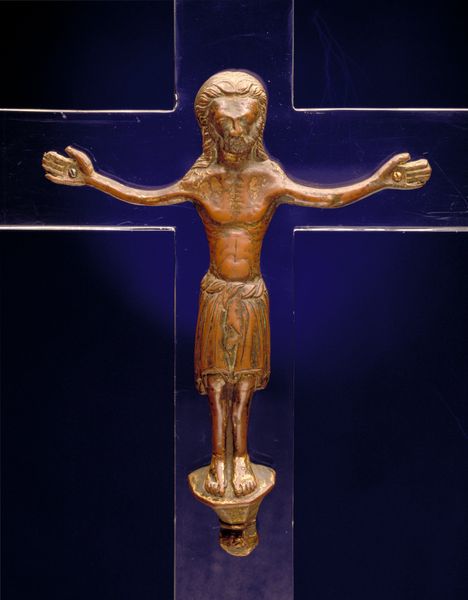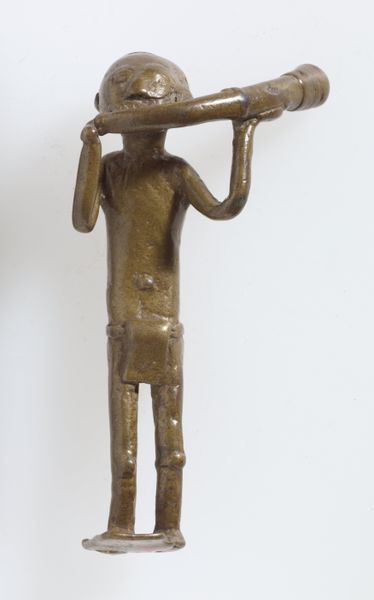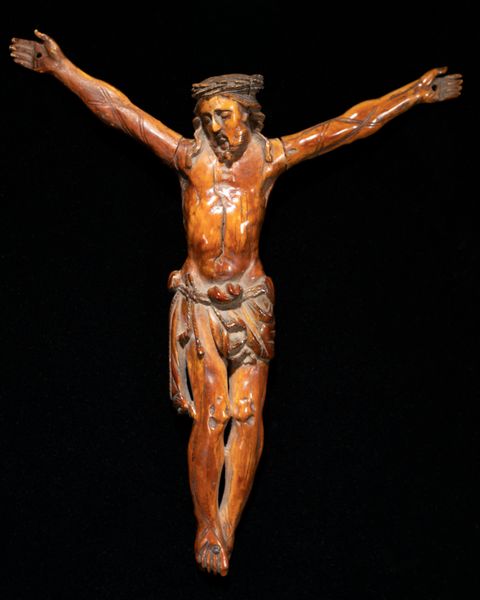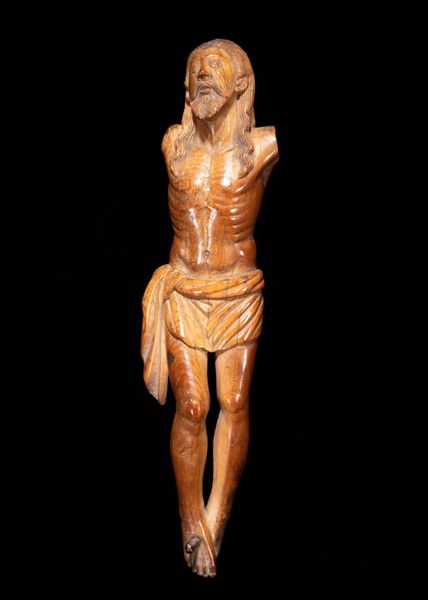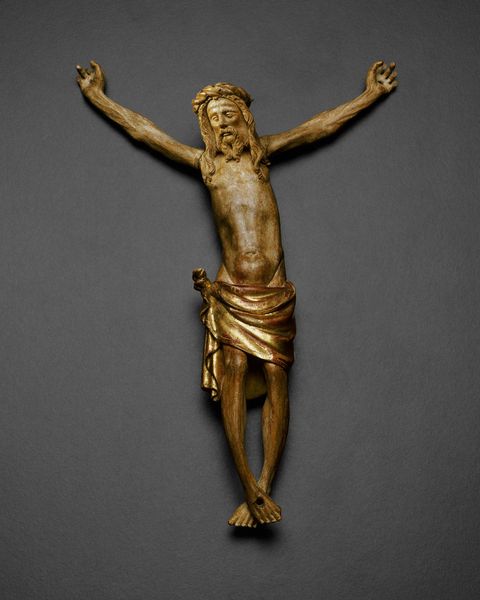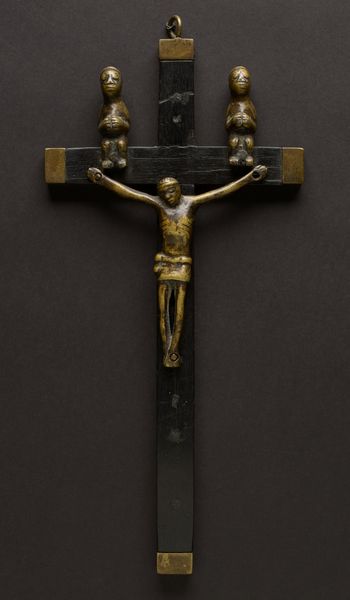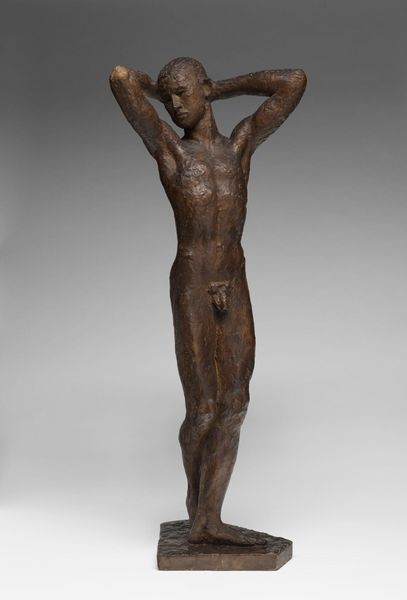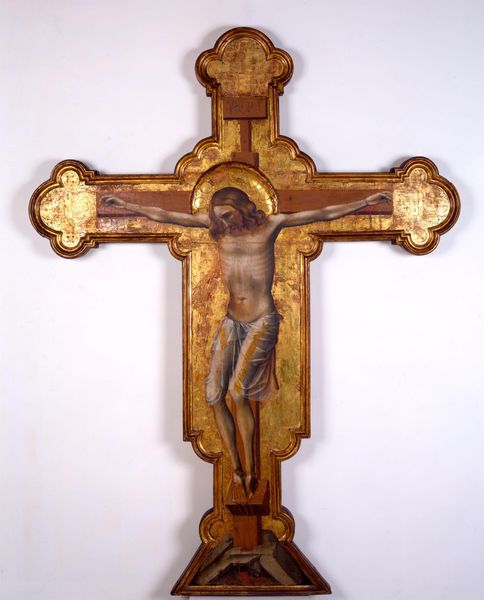
brass, sculpture
#
brass
#
sculpture
#
sculpture
Dimensions: 5 1/8 x 5 1/4 in. (13 x 13.3 cm) (figure)
Copyright: Public Domain
This crucifix was made in Kongo, but the date is unknown. The image may at first seem familiar to Western eyes, yet the figure’s African features and the band of woven raffia around the waist speak to its Kongo origins. Christianity was introduced to the Kingdom of Kongo by Portuguese missionaries as early as 1491, and syncretic beliefs developed that combined Christian symbols with traditional Kongo spirituality. Crosses were especially important emblems of power and prestige. Those produced in the Kongo often adapted the visual language of the imported religion to local aesthetic and cultural values. Historians can research the complicated relationship between Europe and Africa during the early modern period to better understand such cultural hybridity. By studying objects like this in relation to their social and institutional contexts, we can come to understand how religious conversion was far from a one-way street.
Comments
minneapolisinstituteofart almost 2 years ago
⋮
The Kongo kingdom flourished from 1450 to 1700 as a vast, centralized African state on the Atlantic coast south of the equator. Christianity was adopted as a state religion at the end of the 15th century, and over the next 200 years Portuguese missionaries introduced crucifixes, devotional objects, and figures of saints, all of which were copied by Kongo artists. Incorporated into local religious practices that combined the two traditions, objects like this small crucifix were potent aids to piety and ritual.
Join the conversation
Join millions of artists and users on Artera today and experience the ultimate creative platform.
